There are presently around 40 known genera of mosasaur, ranging from relatively small fry like Halisaurus and Kourisodon to frightening behemoths like Gnathomortis and Prognathodon. There were also some truly unique ones like Globidens, with its rounded teeth for pulverising ammonites, and Plotosaurus, the most advanced swimmer of them all. But as far as toys are concerned, only Mosasaurus and Tylosaurus seem to enjoy all the attention. That is, until PNSO released Jason the Ectenosaurus in 2018.
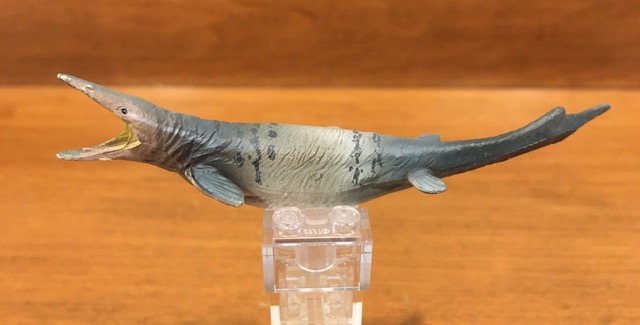
Ectenosaurus was a member of the Plioplatecarpinae subfamily and closely related to the more common Platecarpus. Like other plioplatecarpines, it was not a particularly large sea lizard, achieving a length of slightly more than five metres. Its diet probably consisted mainly of fish and cephalopods, and it in turn may have been on the menu for the much larger mosasaurines that gradually caused the plioplatecarpines to decline during the Late Cretaceous. Two species have been described: E. clidastoides in 1967 and E. everhartorum in 2021. Jason represents the former, of course.
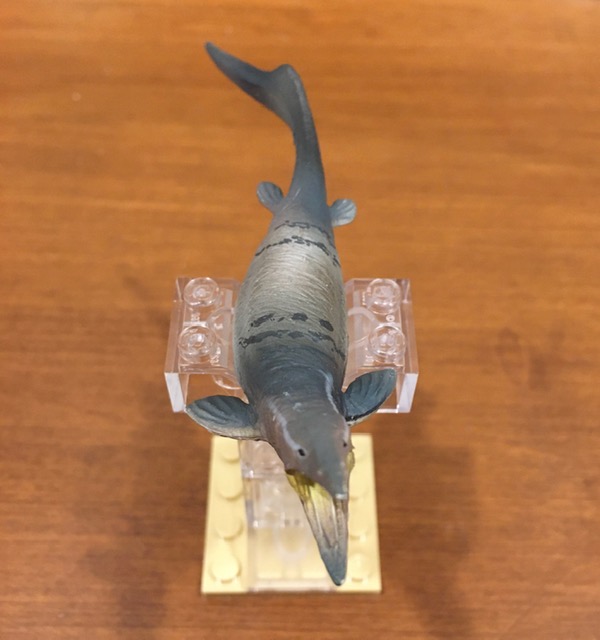
From the tip of his snout to the end of his tail, Jason measures 9.5 cm long. He is sculpted in a realistic swimming pose with his mouth wide open, his head turned slightly to the left, and his long tail undulating to the right. Unlike other mosasaur toys, he is not supported by his flippers in any way; he balances on his round belly instead. And he does so well enough, although he falls to one side with the tiniest nudge. Fortunately, I have plenty of homemade LEGO display stands on hand for this sort of thing!
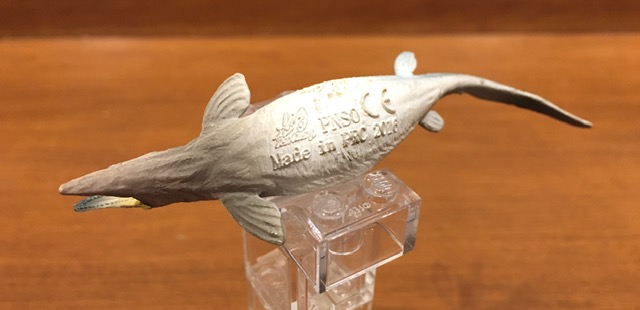
Like most sea monster toys, Jason follows the standard natural pattern of having darker colouration on top and lighter on bottom. His body is mainly light, medium, and dark grey with white on his underbelly and a few very dark grey stripes across his back. The sides of his head and neck are pinkish grey with white streaks coming from his beady black eyes. Strangely, the inside of his mouth is splashed with bright yellow, which could arguably be for display or intimidation purposes. Overall, it’s a good colour scheme that makes Jason somewhat reminiscent of a dolphin. By contrast, the artwork on the pack-in pamphlet depicts a very different Ectenosaurus resting on the sea bottom.
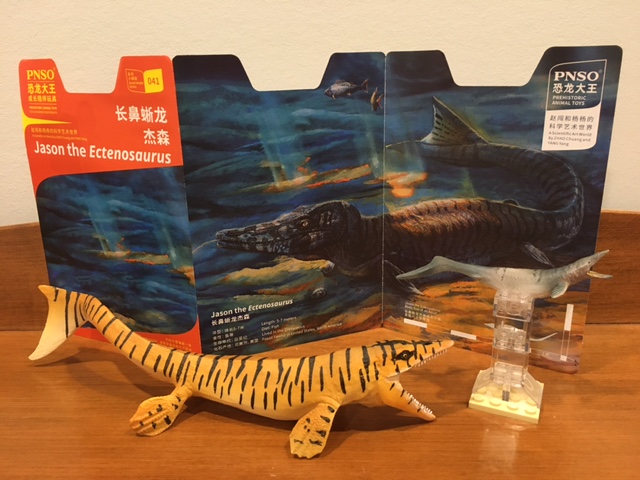
Many mosasaur, plesiosaur, and ichthyosaur toys have smooth skin textures for the most part, but Jason features faint wrinkles all over his entire body. It makes sense to sculpt wrinkles instead of scales on this toy due to its small size, but it’s still a pity given that beautifully preserved skin impressions prove Ectenosaurus was covered in snake-like scales. If PNSO ever does a bigger version in the future as they’ve done with other miniatures like Dakosaurus, Pachyrhinosaurus, and Spinops, it will hopefully have these scales. Jason’s flippers have the usual ribbed texture denoting the digits beneath the skin and his mouth is lined with tiny unpainted teeth (but no forked tongue, alas). His snout is long and narrow, as it should be, and there is a triangular fluke visible on the top of his tail. It’s not as big as the ones on other mosasaur toys, but it’s still enough to help propel Jason through the depths.
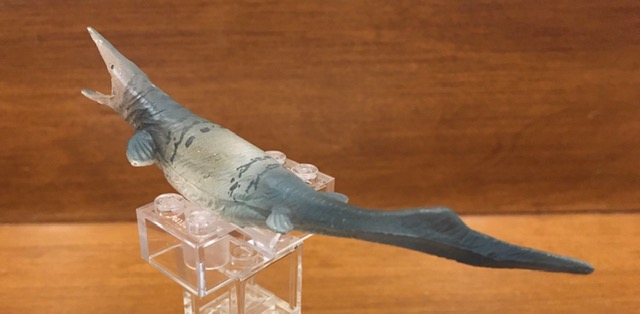
Overall, Jason the Ectenosaurus is a solid little mosasaur figure, and certainly a noteworthy one due to his genus. Of the 25 mosasaur reviews presently on the Dinosaur Toy Blog, this is the only one that isn’t Mosasaurus or Tylosaurus. Hopefully that will change in the future. I’d sure love to see PNSO or any other company tackle some of the genera I mentioned in the intro!
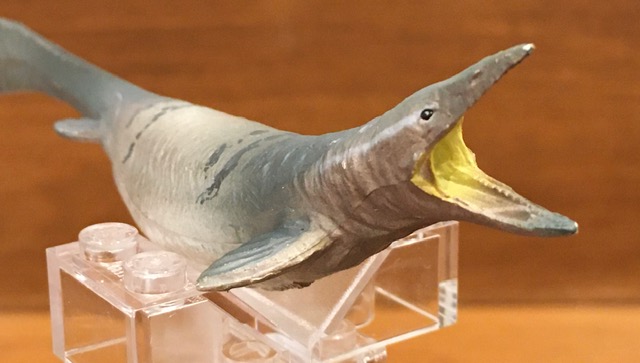
Disclaimer: links to Ebay and Amazon on the DinoToyBlog are affiliate links, so we make a small commission if you use them. Thanks for supporting us!




I fully concur that more variety of mosasaur genera would be welcome. What’s not to love about giant shark-shaped lizards?
Like all PNSO miniatures, the ectenosaurus is a detailed, exceptional and well-made family, typical of a top quality company such as PNSO.